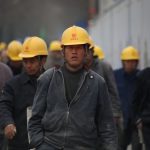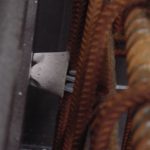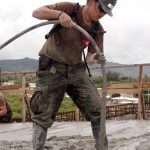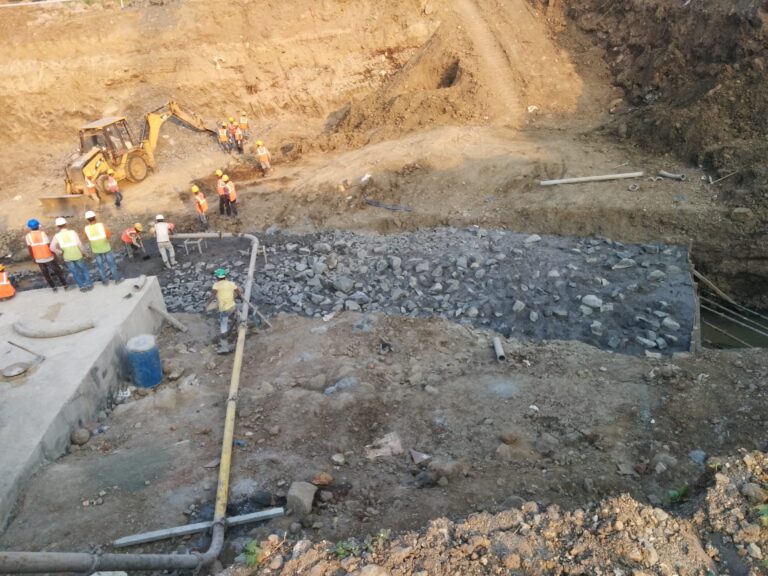Almost every site engineer was supposed to face this situation.
When you remove the shuttering work after concrete pouring, some of the surfaces look like segregated aggregates with voids. Maybe some of the reinforcement bars also visible.
These are called Honeycomb in Concrete. Why?
Because it resembles most likely bees honeycomb since the name.
What is meant by honeycomb in concrete?
At the time of concrete pouring, voids will form between the concrete and reinforcement due to the presence of air bubbles, and it seems to be a nest of the honey bee. So it is called in the name of honeycomb.

Why does it happen? – Reason for Honeycombing
The sequence of improper works results in this,

|

|

|
 |

|
Poor Workmanship – Labours who work in the concrete placement tend to pour all concrete at a given time and like to get away from the site early. If you look closely, they try to pour the concrete far from the recommended height or just throw it away without worrying about aggregate segregation
Inadequate Concrete Cover – Using inadequate & less concrete cover leads to honeycomb. Missing a single concrete cover makes that area vulnerable. The concrete freely flows over the reinforcement rather than covering it in and around.
Improper Vibration – Using too much vibration on concrete. Since concrete workability has been determined for easy transportation, the vibration makes the concrete to break apart from the slurry formation.
Excess Water – Adding more water than the requirement. We know that every mortar mix has its purpose of holding the concrete together. Using additional water makes the cement watery and breaks the concrete.
Oversized aggregate usage – oversized aggregates will settle in between the reinforcement and then blocks the concrete going through it.
How to avoid honeycomb in concrete?
- Use Less Vibration – If you have selected the right workable concrete, you don’t need much for a vibrator. The concrete settles down on its own.
- Concrete Pouring – Try to avoid pouring concrete from an over 1-meter height.
- Use Adequate Concrete Cover – Make sure the reinforcement having a proper cover from all sides of the shuttering material. The concrete cover needs to provided to every space to hold the reinforcement above the shuttering surface.
- Avoid using oversized aggregates – Try to use recommended size aggregates, which will not get blocked into the reinforcement. The coarse aggregates should have good granular shape and the right size.
- Use proper workability – Select adequate concrete workability.
- Avoid using excess water – Whatever reason does not allow labors to add extra water on concrete.
Honeycomb Effects on Concrete
- It affects the load-bearing capacity of the structure.
- It leads the way to air to enter the reinforcement and makes it corroded.
Rectification of Honeycomb
Whatever the cause, do not try to cover it with cement paste. 
Mostly we instruct the worker to apply the cement mortar or cement slurry on the honeycomb. It is not the correct solution for rectification because, after a certain period, the plaster may drop from the honeycomb.
Based on the severity (mild, severe & extreme), honeycombs have to be treated.
- For Mild conditions, the proper chemical adhesive should be injected into the location.
- For severe & extreme conditions, the structural elements should be partially chipped, and recast needs to be done.
I hope you enjoyed the article. Happy Learning 🙂




3 Comments
Ok nice explanation
Thank you!..
Hi Satheesh,
1) Do you have an online concreting glossary? I think I figured out the meaning of “shuttering material” and “concrete cover” from the context, but it would be nice to be sure.
2) What are the rules for adding new concrete to existing concrete. We have a concrete driveway, which was two concrete tracks when we bought the place, then expanded (By my Nephew with assistance from me) to a driveway wider than the original pair of tracks. The nephew tried to put a thin surface layer over the resultant driveway to make it one surface, but this layer has broken up. We are considering further expanding the concreted area and have been told by a concreter that the entire existing concrete driveway would have to be removed and replaced to do it.